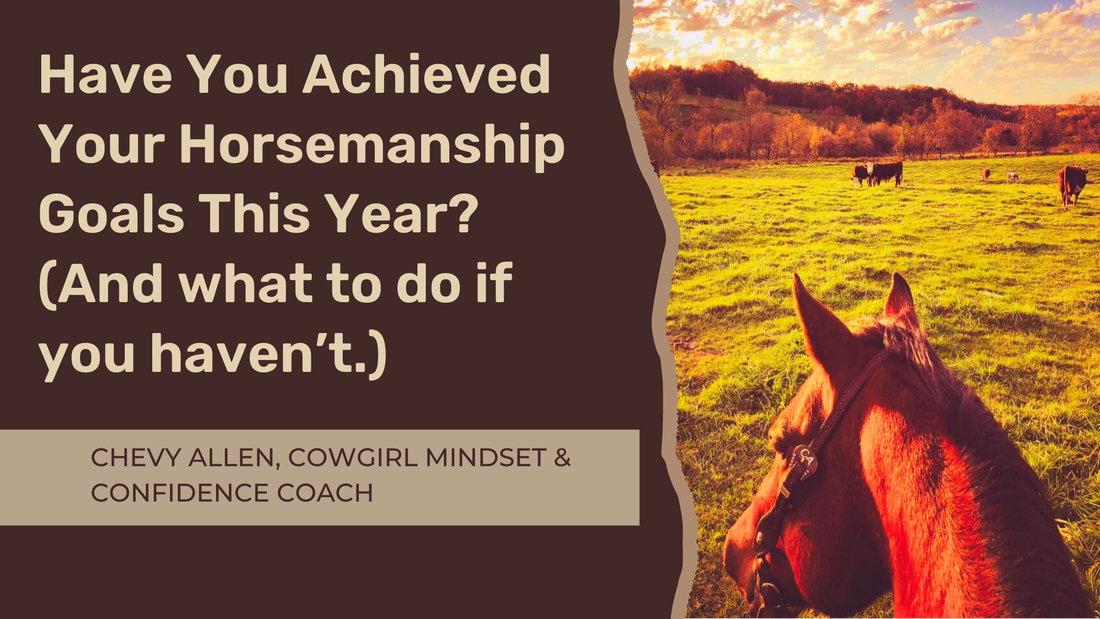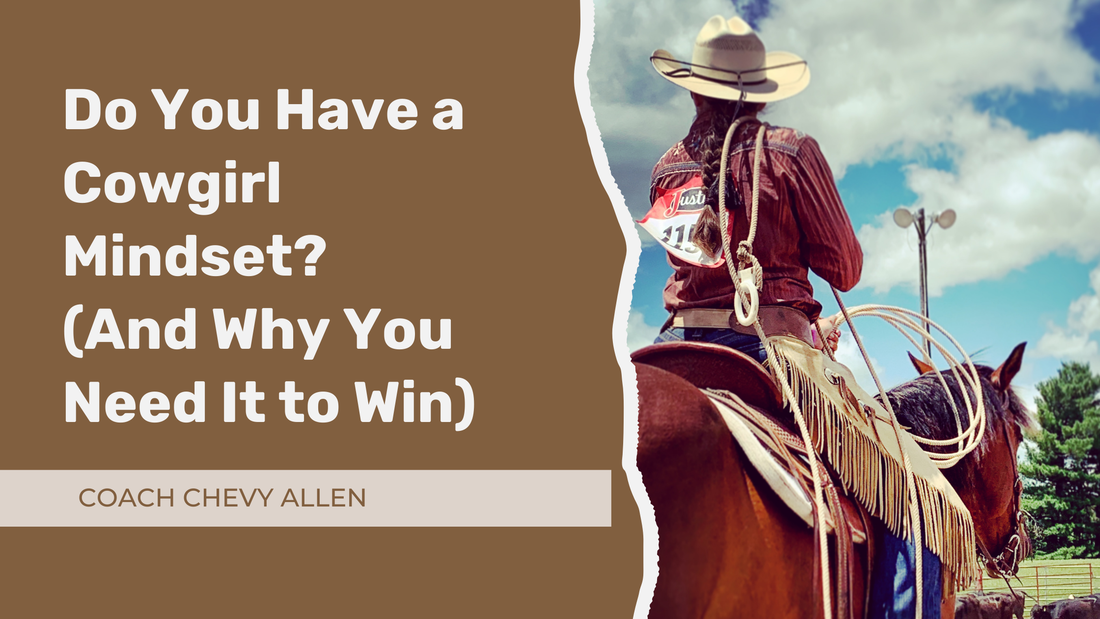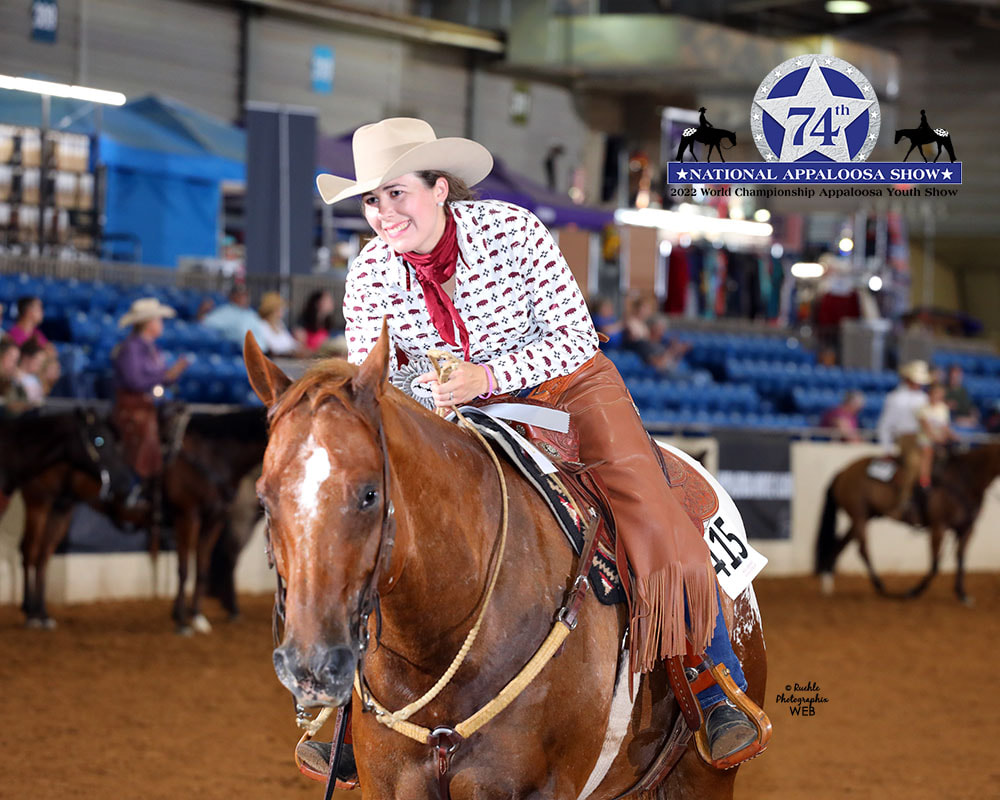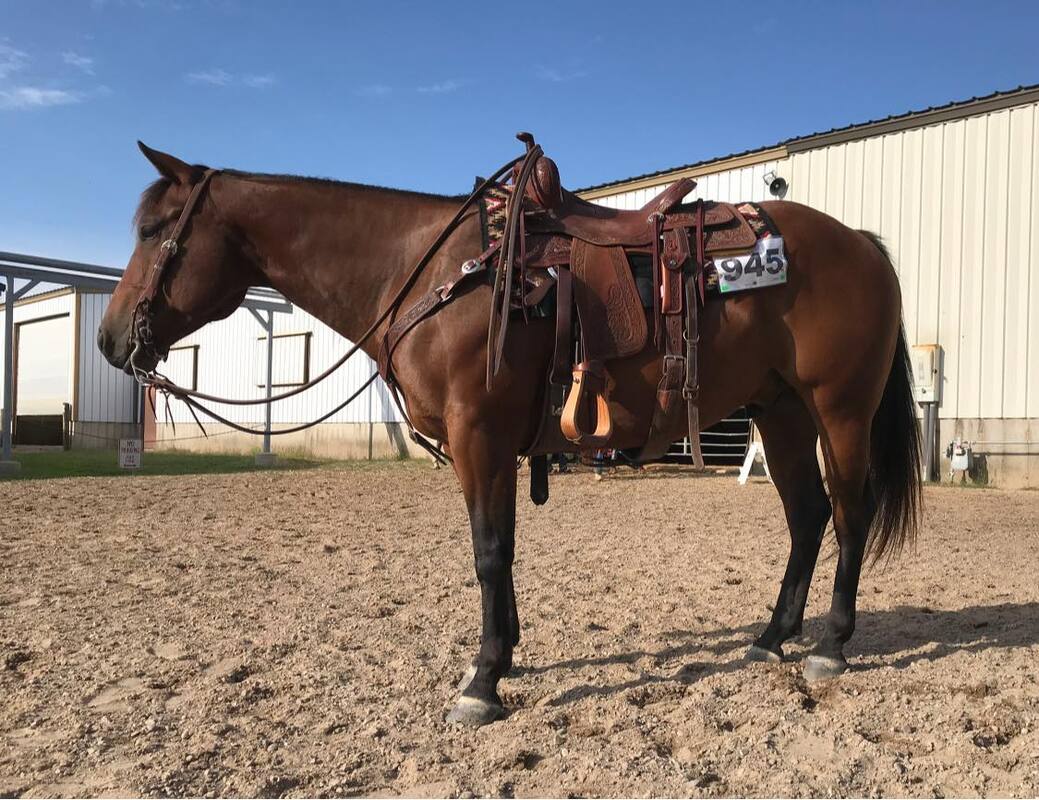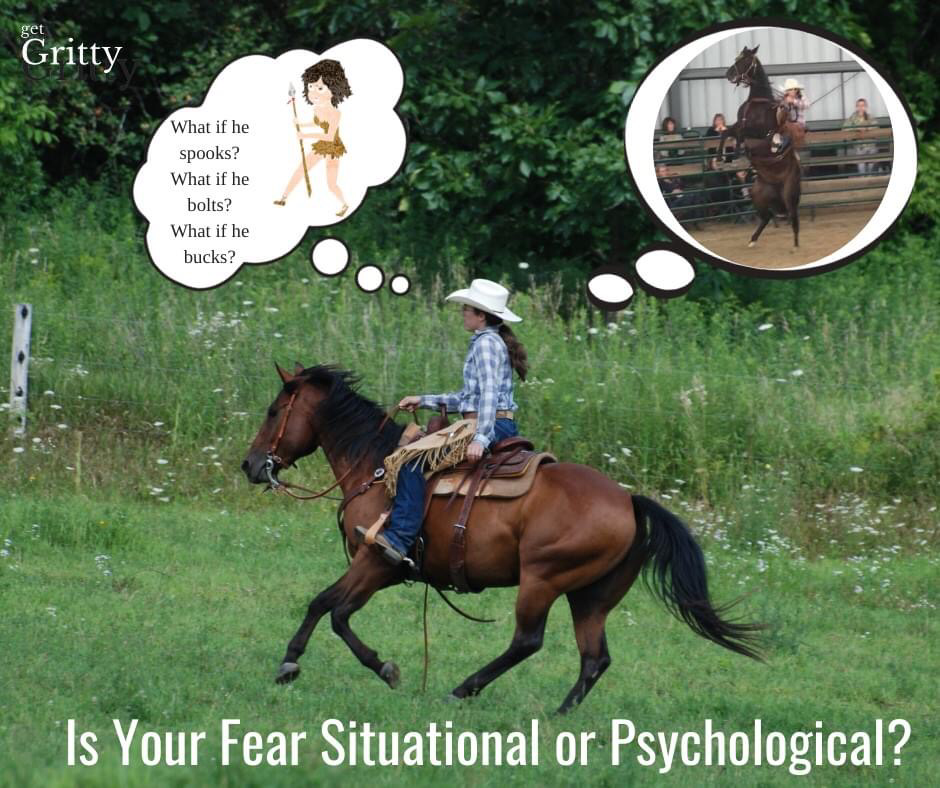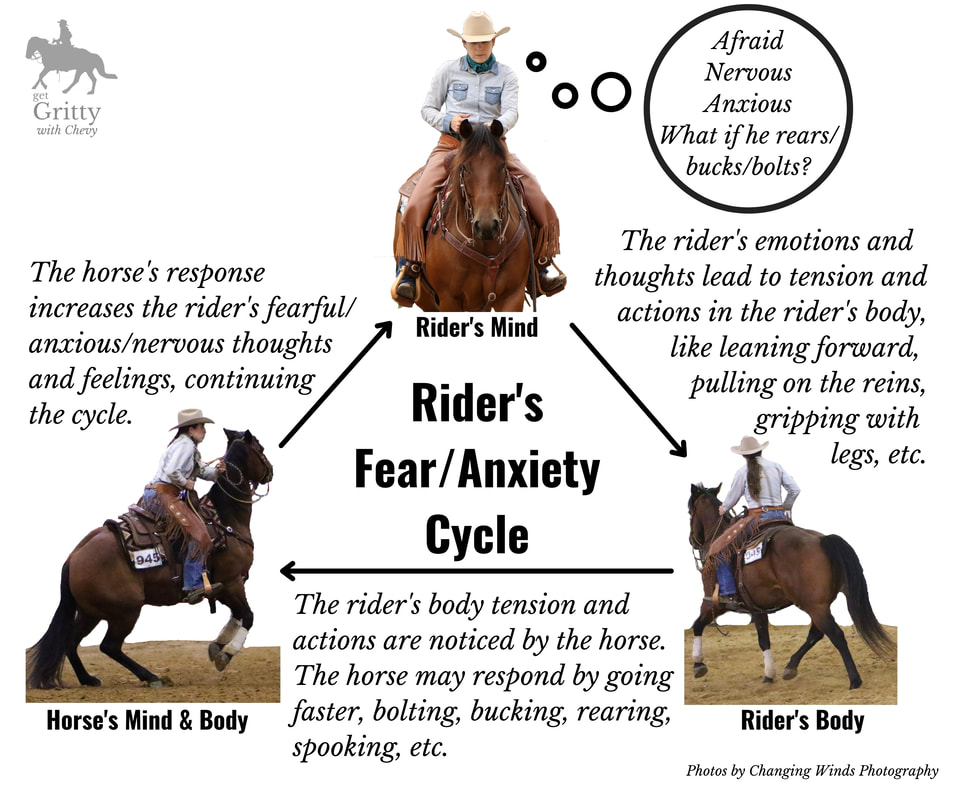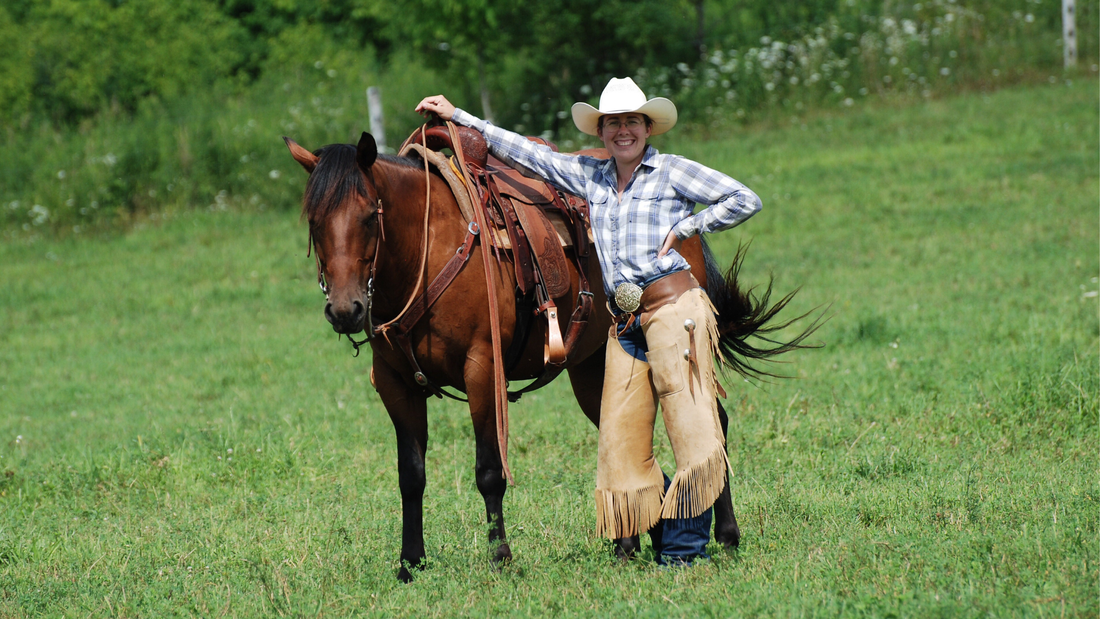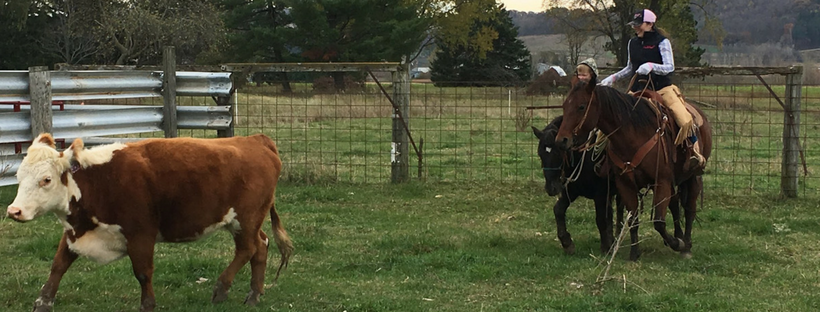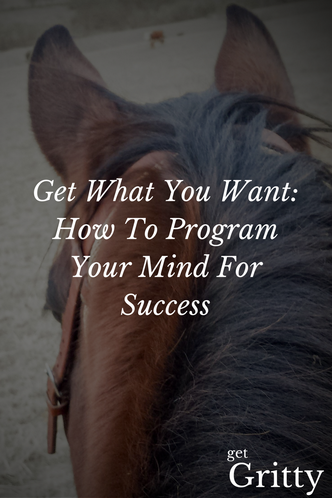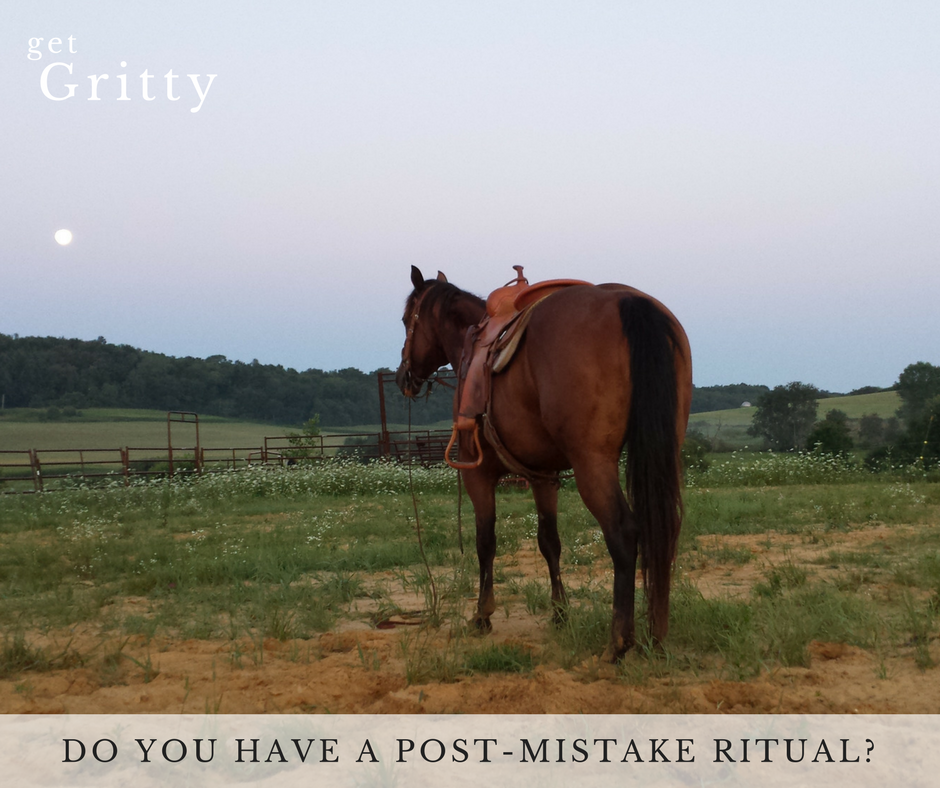|
How is it October already?
For some of us, October means the end of show season. For others, it means it is time for the big year end champ shows. For some October is cooler, nicer riding weather, and the perfect time to enjoy spending time with your horse. For others, we are feeling the chill of fall and impending winter, so we are scrambling to get in rides on our horses before snow arrives.
0 Comments
Horsemanship Journeys can be a rough ride! There will be challenges and obstacles, especially if you chose to compete with your horse. Winning with your horse requires more than just horsemanship skills and talent. To be able to thrive along this journey, you need a Cowgirl Mindset.
Here is the thing about Negative Thoughts. You cannot get rid of them.
Our brains are hard-wired to notice the negative. That is how our cave woman ancestors survived. They noticed the scary saber-toothed tiger, they experienced emotions of fear, they certainly had negative thoughts about the situation, and if they were lucky their fight-flight-freeze response kicked in and they were able to run, fight off the saber-tooth tiger, or freeze and hide until it went away. Now, today we have very few situations where our lives are truly in danger. However, these negative thoughts still occur. See, we still have this inner cave woman who notices all of the negative things, and she is really good at bringing them to our attention, so that we can do something about it and survive another day. So, when you try to get rid of negative thoughts, your inner cave woman thinks that you are ignoring her. When you ignore her, she gets more scared, and the more scared she gets, the louder she gets, and the more those negative thoughts keep on appearing. We need to address the negative thoughts by showing our inner cave woman that there isn't any actual danger, or addressing the fear with action. Speaking of fear/danger, there are two types of fear: Situational Fear and Psychological Fear. Situational Fear is the fear we experience as a response to a real and present danger. Psychological Fear is fear with no concrete, immediate cause. It can be fear of what might happen, fear of what other people think, fear of failing, etc. Now, our bodies respond with the fight-flight-freeze response whether the fear is situational or psychological. We get a surge of adrenaline, our heart rate increases, our breathing gets faster, our muscles tense, etc. Our body is making sure that we have the ability to take action, to fight the danger, run away from the danger, or freeze and hide until the danger goes away. This reaction to fear is normal and is deeply embedded in our biology-this is the response that ensured that our cave woman ancestors didn't get eaten by saber tooth tigers. This fight-flight-freeze response might be helpful when getting ready to run away from saber tooth tigers, but it generally isn't helpful when we are working with our horses. As prey animals, horses are very sensitive to the emotions and body language of others in their environment. So when our thoughts shift to the what ifs, and we start to feel afraid, our brain sends signals to our body, and we get tense, we might crouch forward into the fetal position, we might get fast with our hands on the reins, etc. Our horse senses that we are afraid, and it triggers our horses' fight-flight-freeze response, and our horse reacts, which further makes our thoughts more afraid, and the cycle continues, until either the danger passes or we break the cycle. Psychological Fear can become Situational Fear: Let’s say something scary happens, like your horse is walking calmly down the trail, then all of sudden he stops and shakes. In the moment you grab the saddle horn and hang on. After he stops shaking, and you realize that you stayed on, you probably have a thought like “Whew-that was close!” and you take a few deep breaths, confirming that you really are ok now, before continuing on your ride. The key here is that after an incident of situational fear, once the cause of the danger is gone, you realize that “I’m OK now,” and your body returns to its normal heartbeat and respiration rate, your muscles relax, and you go on about your day. Now, with psychological fear, because there isn’t an actual real and present danger that we can overcome, we might not get to the point of “Whew-I’m ok now.” So our psychological fears accumulate, and we stay in this state of anxiety. And our horse may pick up on our psychological fears, and their response might even transform into situational fears. For example, let's say you are tacking up your horse, and you are thinking about the how he crow hopped the last time you rode him. You start worrying that he is going to crow hop again, and you start feeling anxious. Even though your horse isn’t acting up at this moment, you are worried about the “what ifs” that might happen. Your thoughts start affecting your body-your breathing, your heart rate, your muscles, your posture. Pretty soon your horse will start picking up on your fear, and he will likely respond by getting nervous himself, and he might start misbehaving. This is how psychological fear can become situational fear. Break the Fear/Anxiety Cycle, and don't allow psychological fear to become situational fear. If you feel afraid that your horse might crop hop, then spend some extra time doing groundwork before you ride. Or maybe go on that trail ride with a friend instead of alone until you and your horse feel more confident. Remember, that inner voice of worry is just your inner cave woman, trying to keep you safe! Sometimes she worries needlessly, but sometimes not-so listen up! Ignoring her will just make her more worried and louder anyways, so listen to that voice! Awareness is the first step, then once you are aware of the fears of your inner cave woman, you can take action to prevent your psychological fears from actually occurring. Get Gritty, Chevy
Hi there Mom. I see you. I see you struggling to juggle all of the demands in your life. From taking care of your kids, to the demands of your job, trying to keep up on the endless pile of laundry and dishes, making time to ride can see impossible. So when you finally do get the time to ride, feeling afraid in the saddle can quickly take all of the fun out of an activity that you used to enjoy-spending time with your horse! I understand your struggle. Riding after having kids is not the same. Because YOU are not the same. The physical changes are obvious. Our bodies are not the same after having kids! It takes time (and work!) to regain our core strength, to adjust to changes in balance and strength.
|
